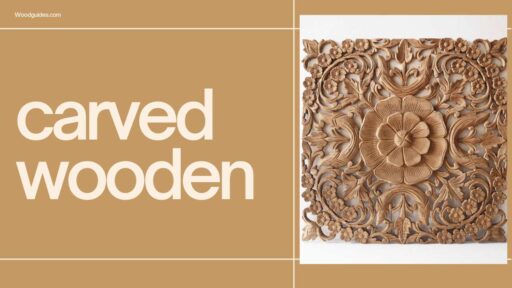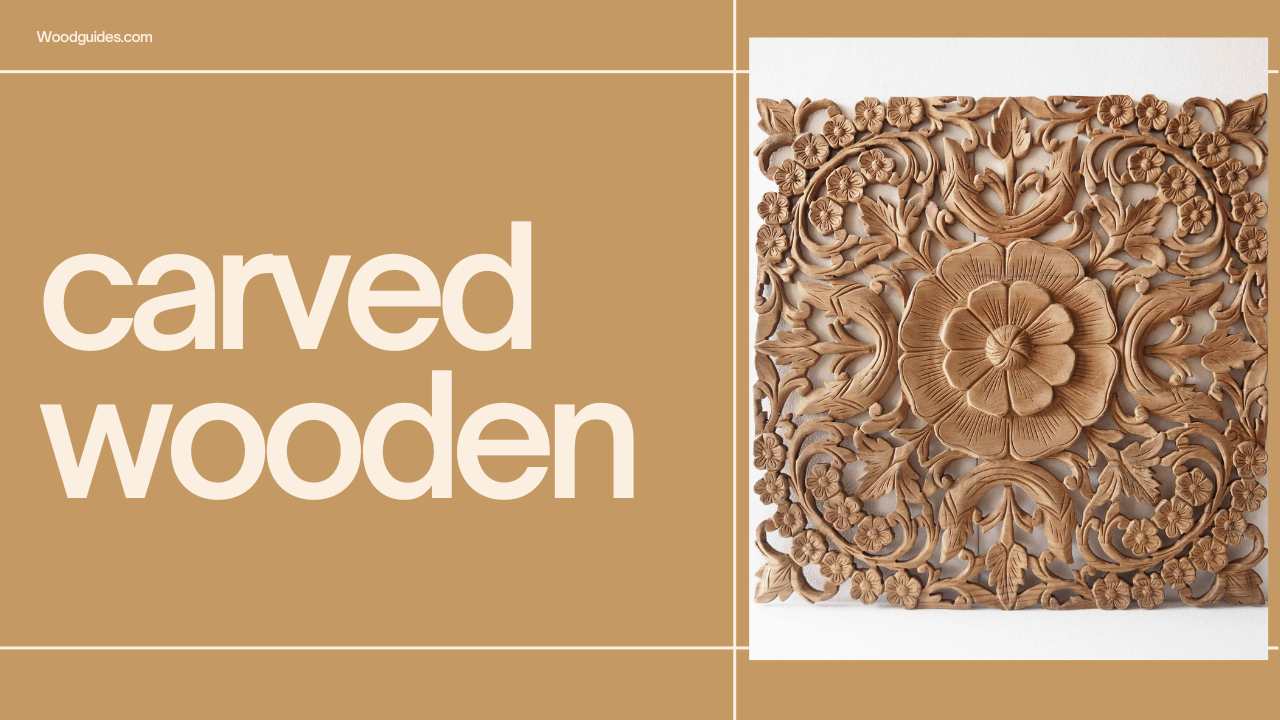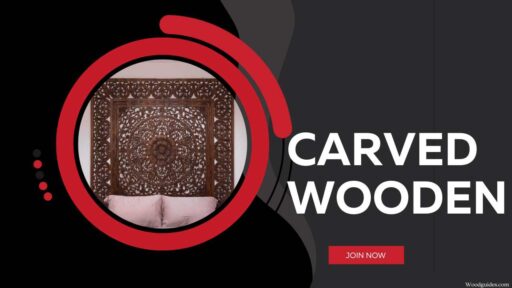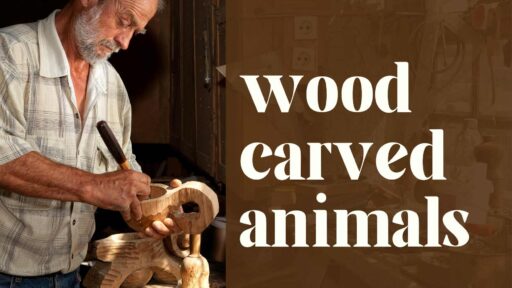Carved Wooden crafts have always held a special place in the heart of artistry and craftsmanship. Throughout the world, artists have transformed simple pieces of wood into elaborate works of art. The art is filled with stories, capturing history, or showing cultural values.
The ability to do both practical and decorative things has made this form of art unique among other forms for many centuries. I will discuss the timeless craft of carved wooden creations in this blog. It will cover their history, types, and the careful process of making them.
The History and Significance of Carved Wooden Creations
Carved wooden creations have a rich history that spans cultures and civilizations around the world. From functional objects to artistic masterpieces, wood carving has been practiced for thousands of years and holds significant cultural, religious, and artistic value.
The Origins of Wood Carving
Carving wood is an ancient practice that can be traced back to the earliest civilizations. This craft has changed a lot. Our ancestors used primitive tools. Now, we have advanced machines. Early man would carve wood to make necessary tools and objects for daily living. As years went by, wood carving became more artistic. Craftsmen designed complex religious figures, detailed architectural elements, and decorative items. These portrayed the beliefs and values of their cultures.
The Evolution of Carved Wooden Art
Throughout ages, there have been different transformations in carved wooden art. The Gothic style exemplified during the Middle Ages had complex woodwork. It was in churches and cathedrals. During the Renaissance, there was further development. Artists such as Grilling Gibbons brought wood carving into fine art through their amazing ornamental work.
Cultural Significance of Carved Wooden Pieces
Carved wooden pieces are not just decorative because they contain cultural artifacts telling the stories about people who produced them. They may represent one’s social status, religious belief or local culture. In some cultures, specific wood carvings are thought to have spiritual power. They are seen as protection or good luck charms. So, they are deeply cherished by communities. They pass these traditions from one generation to another. This makes them key parts of global cultures.
Types of Carved Wooden Creations
Decorative Carvings
Decorative carvings are the most common types of wooden carving. These can be simple objects like a small carving on a mantel, or more complex ones such as ornate friezes adorning ancient building. They can be just for show. Or, they can have symbolic meanings. For example, Celtic knots, found in Irish culture, represent interconnectedness of life.
Functional Carved Wooden Objects
Many carved wooden objects go beyond being aesthetically pleasing and are also designed to serve some functional purposes. Furniture items like tables and chairs may have intricate designs that improve their usability. Others include wooden utensils and musical instruments. Also, there are architectural motifs like door frames and mantelpieces. They all have beautiful carvings showing the skill of their makers.
Sculptural Wood Art
When it comes to sculptural wood art, carvers express their creativity fully. They are three-dimensional figures or abstract forms made from wood that show not only the artist’s imagination but also his skills in carving. Sculptures differ from functional carvings. They are meant to inspire thoughts or convey messages. They transform into something much different from their initial state.
The Process of Creating Carved Wooden Masterpieces
Choosing the Right Wood
The first step involved in creating a carved wooden masterpiece is determining the kind of wood that is most suitable for carving. This is because one type of wood can yield different results from another due to its attributes like grain, hardness, and color. For example, oak, mahogany, and walnut are dense and have fine grains. Pine and lime are softwoods. They are used because they are easy to manipulate when carving.
Carving Techniques and Tools
Once the wood has been chosen, an artist starts by using chisels. They then move to power tools for larger objects, such as drills, during the carving process. The level of intricacy of the design, as well as personal taste, determines which techniques the carver will apply. These involve chips out of wood. They may take several hours or even weeks, depending on skills and patience.
Finishing and Detailing
Lastly, they are carved into wooden masterpieces. Then, they go through a process that gives them a smooth finish. This process includes sanding and detailing to bring out their features. It also protects against weathering and termites. It may include varnishing or oiling to smooth or leave them natural. Finishing touches make all the difference. A piece could look like a mere hewn block. But, with final touches it could come alive like an artwork meant for centuries.
Famous Carved Wooden Creations Around the World
Historical Wooden Carvings
There have been many famous carved wooden creations from throughout history that continue to influence today’s culture. They range from Pacific Northwest aborigines’ totem poles. These poles depict stories about their families and ancestors. They go up to Alhambra’s ornate wooden panels. These panels illustrate the finest Islamic art.
Masterpieces by Renowned Carvers
Some of the famous carved wooden creations are not only beautiful but also made by renowned artists. Examples include Grilling Gibbons in England and Tilman Riemenschneider in Germany. Also, anonymous artisans in Japan’s Buddhism temples. They all became legendary woodcarvers in the world of art.
Iconic Wooden Sculptures
Some wooden sculptures are more iconic than others and have had a major impact on the public’s imagination. For example, Easter Island’s massive Mooi used wood and stone. Giuseppe SanMar Tino’s “Veiled Christ” has inspired many wood carvers. Its delicate realism can’t be achieved when carving wood.
The Role of Carved Wooden Creations in Different Cultures
As Symbols of Cultural Identity
In many cultures, carved wooden creations are important. They represent parts of cultural identity. They show people where they come from, what they hold dear as well as their artistic preferences. For instance, Macoris display intricate designs on their waka and wharenui. These are their canoes and meeting houses. The designs and other cultural artifacts show their ancestry and ethics.
As Objects of Ritual and Ceremony
Carved wood objects are often central to rituals. They serve as focal points for gatherings or practices. They are popular for community or spiritual use. For instance masks used during African tribal rituals whereas Europe Christian churches still use gaudy altarpieces with various meanings attached to them.
Tools for Education and Storytelling
Carved wooden creations also serve as learning tools, passing down stories and lessons from generation to generation. For instance, totem poles are not just amazing pieces of art; they represent different stories, myths and genealogical lineage. It is in this vein that wood carvings act as historians keeping accounts of their original inventors.
Significance Of Carved Wooden Creations In Interior Design
Increase In Aesthetic Beauty
In interior design, carved wooden creations are highly valued due to their capacity to enhance the aesthetic appeal of a place. A well-carved piece of wood can become an attraction in a room by drawing eyes there and adding warmth and texture to interior décor. These pieces bring elegance and fine workmanship that are not easily replicated using other materials whether it is grand ornately carved mirror frame or intricately designed wooden panels.
Reflecting Personal Style And Taste
Wooden carving further allows homeowners express their personal style and preferences. Whether you prefer the simple lines characteristic of Scandinavian design or the intricate patterns seen in Baroque art, there are wood carving styles for all tastes. This way these pieces can be tailored accordingly thus making them fit snugly into existing decorations and personal preference of the room.
Creating A Sense Of History And Tradition
Similarly, incorporating carved wooden creations into interior designs can promote historical continuity within a modern setting. Amongst other things antique carved pieces pry off layers of depth and narrative in interiors talking of long-gone artisans’ skills handed down generations upon generations. This fusion between ancient times with the present can produce a home that has both timeless traditionalism and contemporaneity charm.
Caring for and Preserving Carved Wooden Objects
Regular Cleaning And Dusting
Taking care of your carved wooden items starts by regular cleaning and dusting them down. This will prevent accumulation of dirt which may make the polish on the carvings fade away with time completely spoiling their appearance if ignored over a long time. In an effort to remove dust from these carvings, one should employ the use of soft cloths or brushes that will not affect the delicate parts of the sculpture.
Protection From Environmental Damage
Carved wooden objects are prone to environmental damage caused by humidity levels, temperature variations and exposure to direct sunlight. It is therefore important to maintain a constant environment for them which means avoiding places with direct sunlight or too much moisture. This reduces instances of cracks, warps and fading of the wood.
Using The Right Tools For Maintenance
For maintenance purposes, it is always necessary to use appropriate products. Harsh chemicals and cleaners can easily damage the surface of woods for carving. Instead look out for natural oils as well as waxes made specifically for wood care. These materials feed wood and create a protective wrapping enriching its beauty and lastingness naturally.
The Future Of Carved Wooden Objects
Innovations In Wood Carving Techniques
The future of carved wooden artifacts lies in invention and adaptation. Advancement in technology leads new methods of wood carving such as laser cutting techniques and 3D printing that allows intricate details never achieved before due to complexity. As a result, this has opened doors regarding what can be created artistically making some artists push their limits even further.
Growing Appreciation For Handcrafted Art
With the advancement in technology, there has been a growing desire for handcrafted art in today’s fast-paced digital world. People are turning to unique, hand-hewn wooden articles that provoke personal links with the craftsperson and offer an alternative to mass production. This increase of interest is a good indication for the future or traditional wood carving since it guarantees perpetuation and appreciation of the skills as well as the artistic talents involved.
The Role of Sustainability in Wood Carving
Sustainability is starting to matter when it comes to carved wooden pieces. As more people become aware of environmental problems, artists and consumers are looking for ways through which they can ensure responsibly sourced wood used for carving. This sustainability approach not only helps save our planet but also adds another layer of significance on already enriched heritage from woodcarving.
Where to Find and Purchase Carved Wooden Creations
Local Artisans and Craft Markets
Directly from local artisans at their workshops or craft markets remains one of the best places where you can find carved wooden creations that you want to buy. By buying directly from local artists, you give your support to them while also getting insight into what inspired them when making such item. When you purchase items from these local artisans, then it means that whatever is bought is original itself.
Specialty Stores and Online Marketplaces
Carved wood items can be found in specialty stores and online marketplaces alike. Platforms like Etsy or eBay have all kinds – antique or contemporary – making it simple to find something suitable within your style and budget range. It is important therefore that before purchasing, one should interrogate the background of any seller he comes across as well as look through reviews so that his/her piece doesn’t lack genuineness.
Custom Commissioned Work
A person who has a clear picture will probably hire someone who will make this dream come true being a skillful wood carvery if wanted. This gives room for participation during designing and ensures that the final product matches your expectations. The custom work can consume time and take a lot more money but it is worth having a unique piece that has an invaluable value to yourself.
Frequently Ask Question
How can I tell if a carved wooden piece is of high quality?
Normally, top-quality carved wooden pieces have no rough edges or splinters, rather they are smooth to touch. Moreover, the wood should fundamentally have no cracks or any other sort of damage while the details should be sharp. Finally, one may want to consider what wood type was used and how perfect the carver is.
Can carved wooden creations be repaired if damaged?
Yes, often many of them depending on extent of damage may be repaired. For best advice about this option please contact experienced conservator or woodcarver who will inspect this item first and suggest further actions.
How often should I oil or wax my carved wooden pieces?
Frequency oiled or waxed depends on where you put your pieces (whether indoors/outdoors) as well as the kind of finish you applied on them . As a rule of thumb, every 6 months to 1 year ensure that you feed the wood by applying either oil or wax until it feels greasy again.
Conclusion
Carved wooden creations symbolize the timeless appeal of this art. Carved wooden pieces are more than just beautiful, they have a rich history and cultural importance as well as their role in interior design and the changing techniques of making them. They epitomize the passion, expertise, and legacy of the craftsmen behind them.
From now on, it’s obvious that love for these wooden handcrafted arts will not fade but instead continue to be appreciated by people due to its ability to connect us with our pasts, celebrate our present moment and inspire our future.
Being a collector, enthusiast or producer of wood cravings means you never stop learning new things about them. My advice is that you hunt down these works of art by supporting those who make them and even trying your luck in attempting this incredible craft. The world is full of potentialities both historical and modern in designing carved wooden things; come on in!





